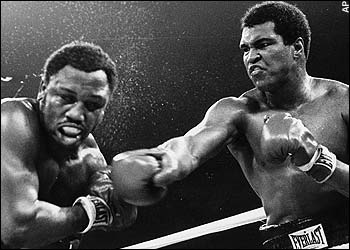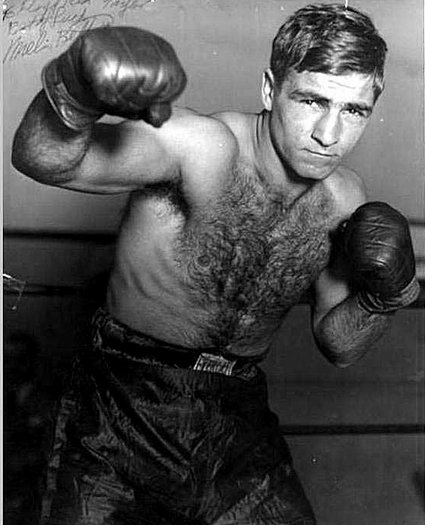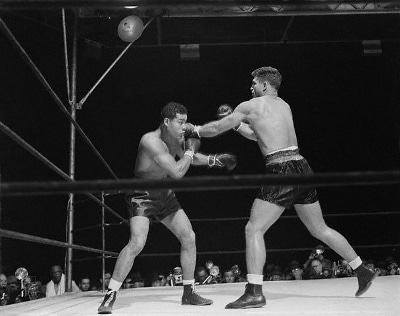
Editor’s note: This is a guest post from Chad Howse who is doing a series of posts for AoM on the basics of boxing.
As I mentioned in a previous article, it’s always the punch you don’t see coming that results in a knockout. And the hook and the uppercut are two punches that, if thrown effectively, can catch your opponent off guard.
I’ll start off by outlining a couple of rules:
- Don’t throw a lead uppercut. That is, don’t throw an uppercut unless it is preceded by another punch.
- Don’t “show” your hook unless you’re using it to set up another punch. A hook is best thrown when your opponent doesn’t see it coming, mainly following a cross or an uppercut.
- Throw both punches with bad intentions.
I’ll get into the specifics in the following video, then list some tips at the end of the article.
Feel free to add more tips in the comments section, there were some great ones in the last article.
VIDEO
Tips:
Put your body into it
Every punch starts from the ground up, but this is especially true with the hook and the uppercut. Your hips are the most important aspect of each punch as your arm doesn’t extend like it does when you’re throwing a cross or a jab.
Let your hips lead the punch, with your shoulder and arm following.

Ali demonstrates the power of the hook.
Protect yourself when throwing the punch
When guys throw a hook, a lot of the time they throw their chin out there as well, giving their opponent a nice big target. Keep your opposite hand up and your chin down throughout the duration of the punch.
I mentioned that it’s always the punch that isn’t seen or expected that results in a knockout, well, when you’re throwing a punch the last thing you’re expecting is to get hit with a solid one, so keep that in mind.
Punches in bunches
Ideally, throw either punch at the end of a combination or flurry, or at least after throwing another punch.
A good combination to set up an uppercut: throw a jab, cross, hook then finish with a solid uppercut.
To set up a powerful hook: throw it after throwing a cross. You can even throw one off of a jab which is usually unexpected.
Understand your opponent
To land a hard punch in the right spot you don’t want your opponent to be expecting it, but you also don’t want them to be guarding that spot.
If you’re throwing a left hook, you don’t want his right hand up at the side of his head. To get it out of the way, throw a jab, cross or uppercut which will get his mind off the middle of his body, opening up the sides.
If you’re throwing an uppercut, precede it with a hook to get his guard on the side, opening up the middle of his body, making him vulnerable to an uppercut.
Focus on speed and accuracy, not power
You hear it in baseball a lot: “He struck out swinging for the fences.”
Well it’s no different with boxing. Loading up on your punches is like having a “tell” in poker: it gives your opponent a head start to defend or land something of his own.
Focus on speed; power is something that shouldn’t be forced. If it is, you risk premature fatigue, and missing your target.
_______________
Boxing Basics Part I: How to Wrap Your Hands
Boxing Basics Part II: Stance & Footwork
Boxing Basics Part III: Defense
Boxing Basics Part IV: Punching – Jab & Cross
Boxing Basics Part V: Punching – Hook & Uppercut
Boxing Basics Part VI: Punching Combinations
________________________________________________
Chad Howse is a amateur boxer and personal trainer who’s passionate about helping clients achieve satisfying results in a short amount of time, so they can get the most out of life. For fitness tips and inspiration check out his blog, Chad Howse Fitness, sign up to get two free ebooks, and subscribe to his RSS feed.







